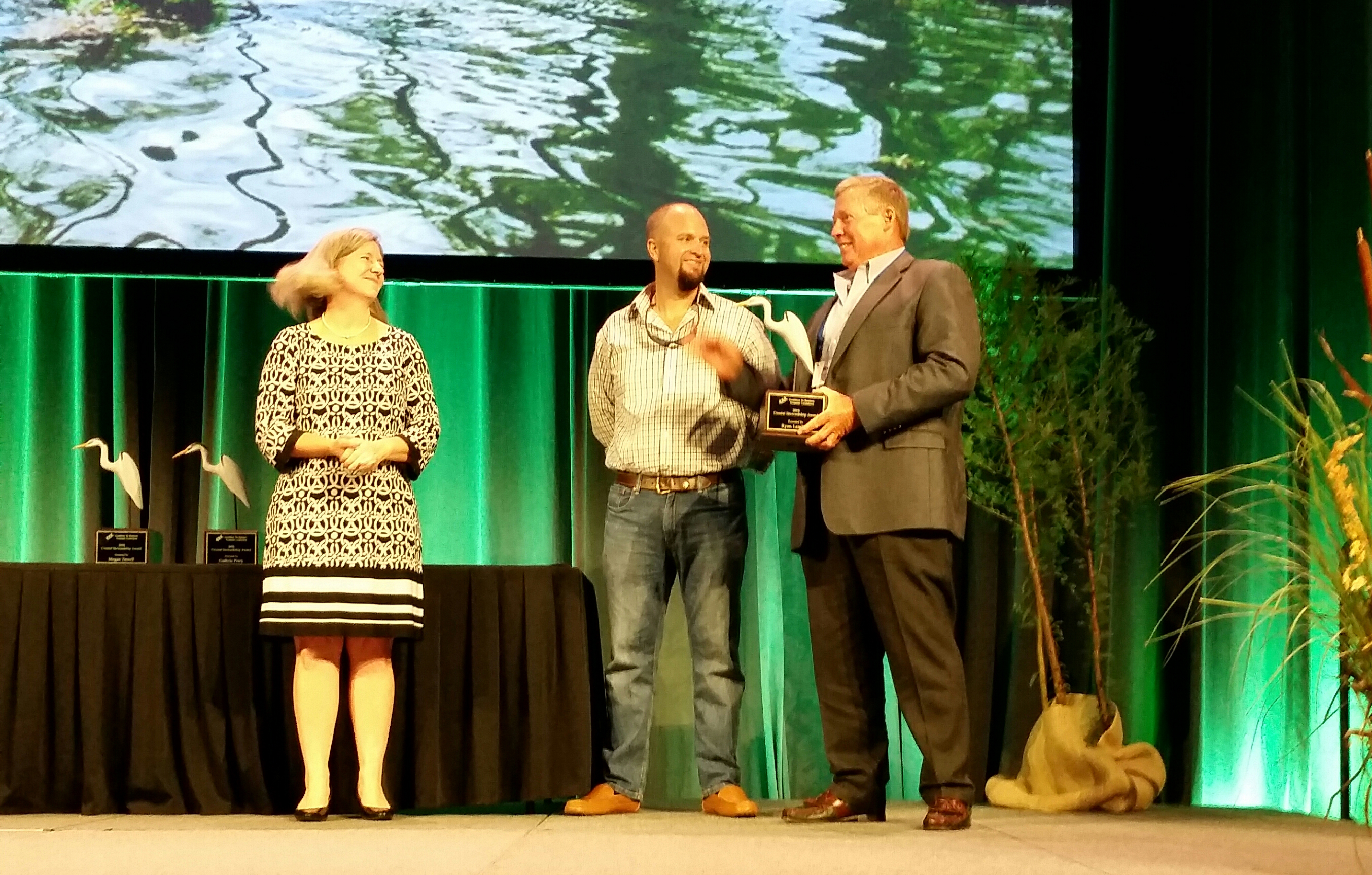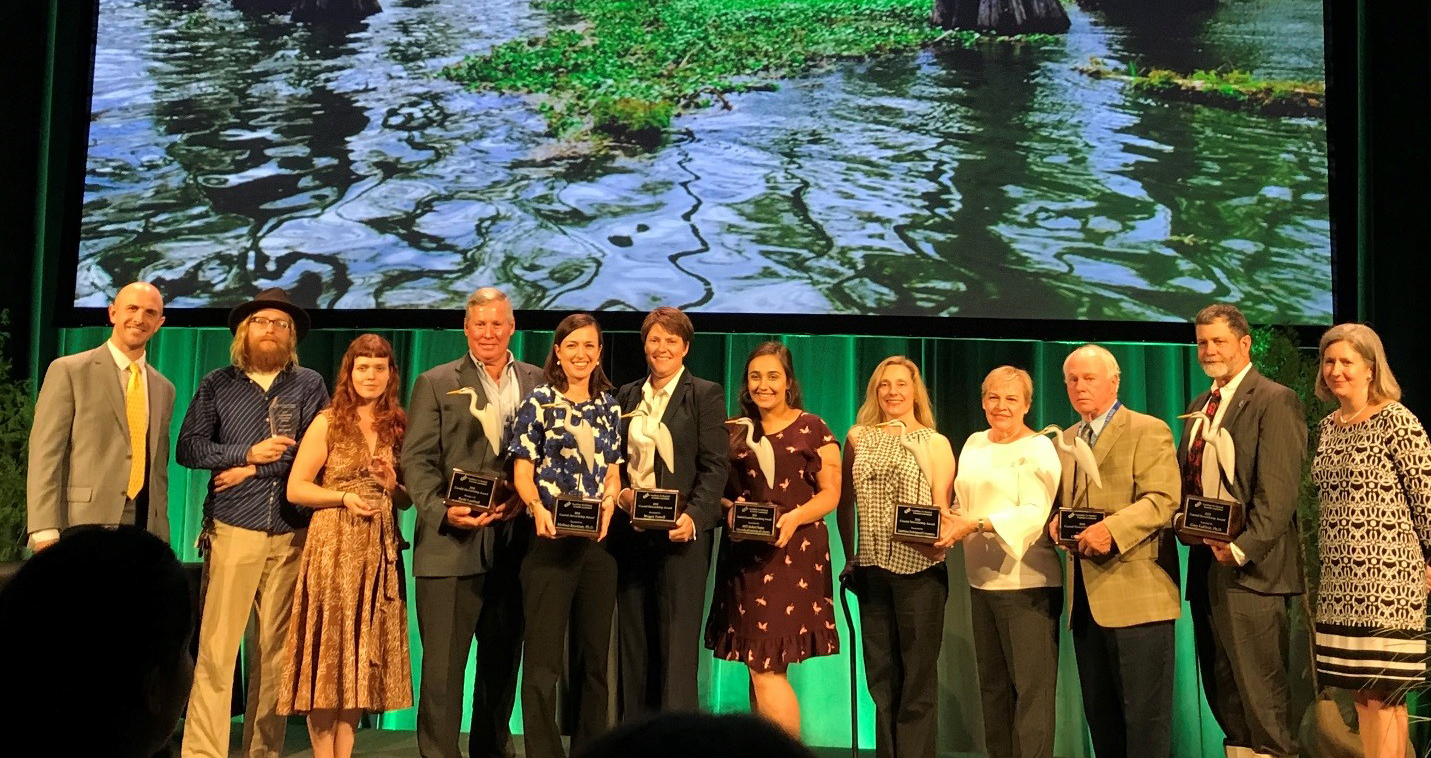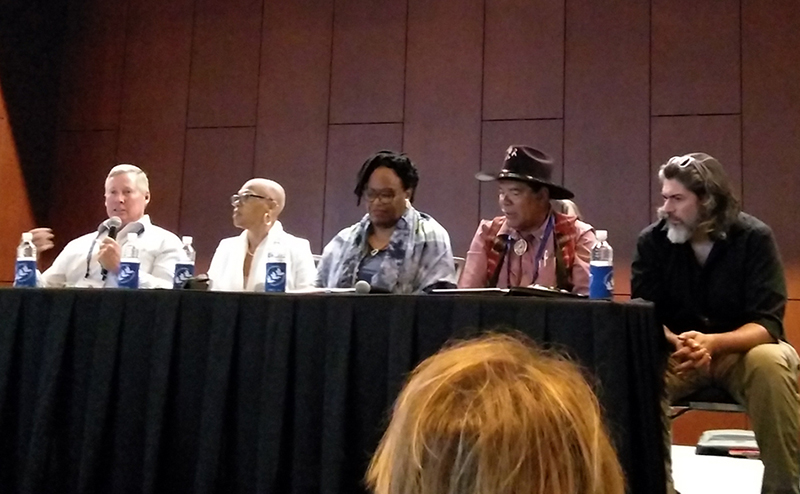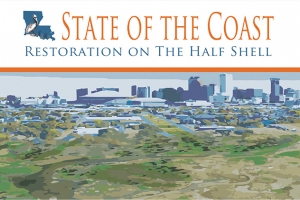How do you like your restoration?
This year’s Restoration on the Half Shell panel discussion featured our own Vanishing Paradise Sporting Council member, Ryan Lambert, owner of Cajun Fishing Adventures.
This week, Vanishing Paradise joined leaders in coastal restoration for the fifth State of the Coast conference in New Orleans. Hosted by the Coalition to Restore Coastal Louisiana (CRCL), State of the Coast brings together representatives from local and national government agencies, the NGO community, engineering firms, scientists, students and more to discuss many angles of coastal restoration – from project specifics, to community partnerships, to funding mechanisms and much more.
While the majority of the conference takes a deeper dive into policy, science, and engineering, today’s “Restoration on the Half Shell” panel was a little different, giving a half day overview of coastal issues and why restoration is important to community leaders. This year’s Restoration on the Half Shell panel discussion featured our own Vanishing Paradise Sporting Council member, Ryan Lambert, owner of Cajun Fishing Adventures. Ryan brought a sportsman voice to the table and highlighted why coastal restoration is so critical to the habitat that he relies on, and that we know as “Sportsman’s Paradise.”
Ryan is a tireless advocate for harnessing the power of the Mississippi River and its sediment to fully restore our rich and vibrant Mississippi River Delta. We are very proud to have him on the Vanishing Paradise Sporting Council, a group of sportsmen from across the country, working with us to further our mission of conservation and restoration. An avid sportsman who owns and operates Cajun Fishing Adventures, a lodge and guide service, Ryan’s perspective on coastal restoration is shaped by more than 30 years of personal experience. His conservation efforts were recognized this year at State of the Coast when he was awarded a Coastal Stewardship Award from CRCL.

Awards ceremony at the 2018 State of the Coast.
These awards honor individuals who demonstrate outstanding commitment to the coast and have made significant contributions to the restoration and conservation of Louisiana’s coastal wetlands. In addition to decades of advocacy, Ryan recently secured $1 million in North American Wetlands Conservation Act funding for a restoration project in the Bay Denesse area with Ducks Unlimited and the LA Coastal Restoration and Protection Authority. The project is expected to begin construction in 2019 and will restore more than 2,500 acres of private and public land.

Awards ceremony at the 2018 State of the Coast.
During the Restoration on the Half-Shell panel when asked about how land loss has impacted the environment and his business, Ryan stated:
“I have watched the land disappear in a more intimate way, every time I go back in the next season land is gone. I have seen the duck ponds turn into open water. I have a unique thing given to me and that is [river] diversions, I work in them every day. I have 19 of them that flow that I work in every day and I see how they grow aquatic vegetation and attract birds. I have a different perspective and that is why I am such an advocate for coastal restoration”.
Being a guide in South Louisiana, Captain Lambert has many out of town visitors. He uses this unique opportunity to share his experiences and help convey a message to people that may not have as much stake in the game as a citizen of the state. He does this by:
“having the GPS on the whole day and showing them where it used to be land that we are currently running on in a boat. Our problem is huge. It is one of the greatest environmental disasters in the world. So I compare our land loss to real world things, like comparing how our land loss is equivalent to the size of Delaware or the Grand Canyon”.
When asked how Hurricane Katrina effected his whole area and how this growing problem of land loss impacts his business, Lambert said:
“I have 2 lines on the walls at my lodge. I have one where the levee is and one that is 4 feet higher, where the Katrina flood mark is. That Katrina line is 20 feet up. When you think it takes 2.7 miles to break down 1 foot of storm surge, I shouldn’t have had the much water in my lodge. But when you look out the window and see there is no land in Buras, that is why I flooded. Hurricanes are a big impact, but the real cancer is the coastal erosion. It slowly eats and eats, then the hurricane comes and wipes everything out. My change is 2 fold. Infrastructure and habitat change. Katrina changed Buras. So many people moved out leaving not enough grocery stores and banks. I have to go 70 miles to bank and get fresh produce. It is very hard to run a business this way. The west side of Buras is 100% gone. I can get in my boat and never touch the steering wheel before I hit the Gulf of Mexico. It is 4 feet deep. There is no freshwater aquatic vegetation for minnows and crabs, and such, so everything is leaving. Everything I do is for the next generation”.

Ryan serves as a great role model for advocating to restore our coast. He asked everyone in the audience to please stay informed and contact their legislators in order to get the job done. Demand action by calling the local and federal leaders. Being a strong supporter for sediment diversion, Ryan said, “If we put these diversions in, we can manipulate them to grow the land that we need. They are the most cost efficient plan that we have in the coastal master plan. And we need to save what Louisiana has to offer- wildlife, the number one fisheries in America, culture, food, and hospitality.
I had the chance to speak with Captain Lambert after the panel, and asked him what his thoughts were on the session. To him, it spoke volumes as to how many young people were in the audience. We know that this is a battle today and will be tomorrow. However, it really is up to the next generation. He said that’s why he does what he does. To make sure that his children and grandchildren can enjoy what he always has. To preserve our hunting and fishing legacy, and remain the “Sportsman’s Paradise”.
